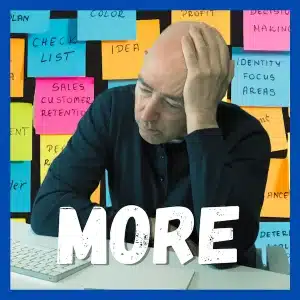This is our seventh in a series of posts from the Book Rapper issue Authentic. It’s derived from Rob Goffee and Gareth Jones’ book Why Should Anyone Be Led By You that discusses what it takes to be an authentic leader. Previously in this series: Cultural Relationships
Managing social distance reflects the need to engage with a range of people in a range of situations. Sometimes you need to be close and personal, and sometimes you need to keep your distance. Here we explore the nuances of this critical situation sensing skill.
Manage Close
As a leader you want to know and understand your followers. Find out who they really are and what makes them tick.
Closeness builds trust, rapport and sociability. It’s crucial for team building. And, up close is your best chance to be authentic and real. To do this you’ll need to show positive emotions and share yourself openly. The more you share, the more others will share. Social settings are ideal for this where we can relax and be who we are.
But, don’t be too close and not too soon.
For many cultures, the challenge is to establish distance. Plus, introverts are over-represented at the top of organisations and may find closeness difficult.
Be close in your own way and remember small consistent things matter most.
[Tweet “Great leaders manage social distance to engage in different situations #leadership”]
Manage Distant
We need distance to gain perspective and objectivity. It builds solidarity when based on a shared view of a goal.
Creating distance signals to the followers that the leader has an over-arching purpose.
Whilst emotional intelligence suggests we need to express our emotions, sometimes good leadership involves withholding and maintaining distance. Tough love!
We can signal distance by managing the context of the meetings (Is it social or business?), the formal use of language (short, direct messages) and by editing out the niceties.
Distance is crucial for managing performance and holding people to account. Aim for respect, not friendship. And, effectiveness, not popularity.
[Tweet “Manage at distance for perspective, up close for trust #leadership”]
Manage Both
Sometimes it’s best for the leader to be in the trenches and sometimes on the hill observing the troops. A critical leadership skill is to be able to move from close to distant and back again. When and how you do this is an art. Sometimes you’ll move gradually, sometimes abruptly. Be aware of any conflicting signals you may offer.
Each of us has a preference to be either close or distant. Notice this and practice both modes.
The challenge is that it is easier to be close to people you like and you will not necessarily be dealing with people you like.
This need to be both close and distant shows why trait theory is unable to identify the one best leadership style. There isn’t one! We need to be flexible and adaptable. It’s a paradox, get close and keep your distance.
[Tweet “Great leaders manage closely AND at a distance #leadership”]
Rule of Thumb: Distance when you tell them what to do. Close when you talk about how.
QUESTION: Do you prefer to manage close or distant?




